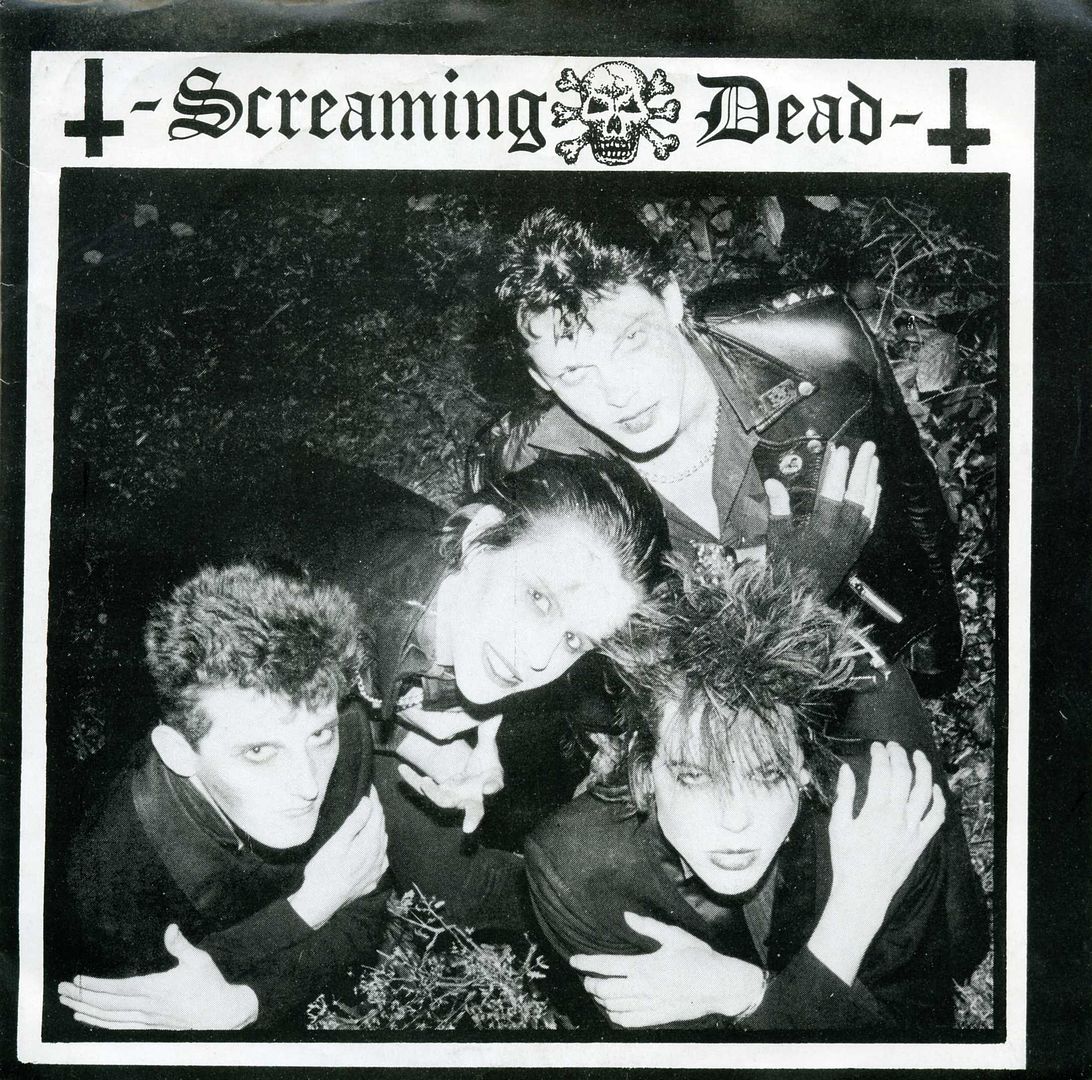
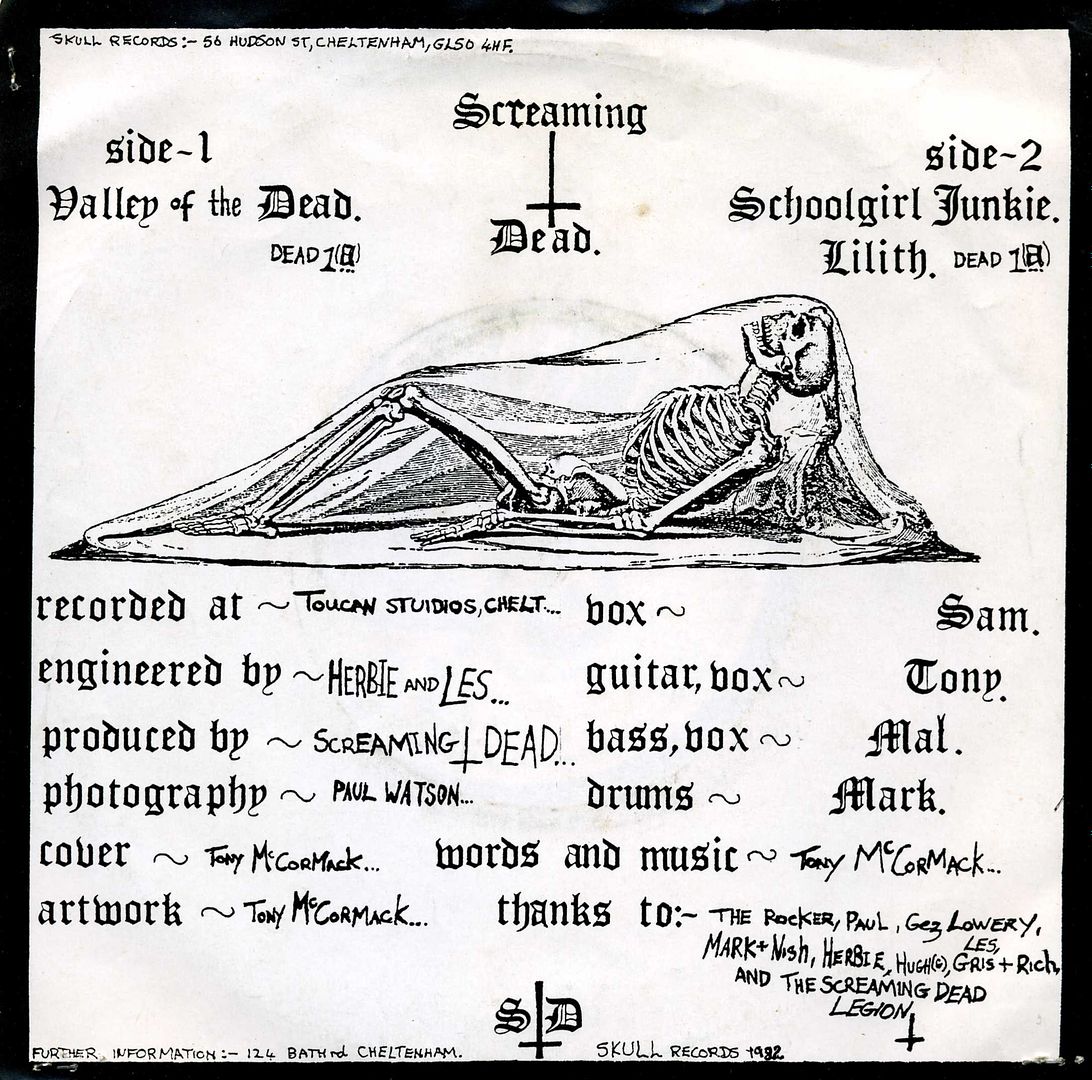
For this years Beltane I am placing up the debut Screaming Dead 7″single up on KYPP.
Screaming Dead were a band I first read about in a copy of Rising Free fanzine, written, edited, printed and distributed in and around the Welwyn, Hitchin and Stevenage areas. The ‘No Future’ issue of Rising Free to be precise. I was surprised to read about this band as the band came from the other side of the world, well from Cheltenham to be exact, home to the other punk band, the massively fine Demob.
Cheltenham’s answer to the Misfits. That can’t be a bad thing.

The band, named after the English title of Drácula contra Frankenstein, the 1972 horror film directed by Jesús Franco, was formed by guitarist Tony McCormack, who recruited former singer with The Waste, Sam Missile, bass guitarist Mal Page, and drummer Mark Ogilvie.
The band built up a strong local following which spread farther afield with coverage in fanzines such as Gez Lowery’s Rising Free and through sales of their demo tape. They followed their first tape with a more formal release, the Children Of The Boneyard Stones cassette, which came with a badge and a copy of the band’s own fanzine, Warcry.
They then self-financed their debut vinyl release, the ‘Valley of the Dead’ 7″ single, initially released on their own Skull Records label, but when it sold out of its first pressing within a week it was picked up by No Future records. The band’s next release, the ‘Night Creatures’ 12″ single, saw them break into the UK Indie Chart, reaching number 22 in September 1983.
While the band were at times tagged as Goths, the label was rejected by Bignall, who in a posthumous interview stated “Screaming Dead were a punk rock band, there’s no doubt about that! We had a bit of an interest in the horror theme, and that was how we decided to present ourselves.”
For their next release, the band recorded a cover of the Rolling Stones’ ‘Paint It Black’ which was also an indie hit, and was recorded as a tribute of sorts to Brian Jones who is buried in their home town of Cheltenham. In 1984, taking inspiration from X-Ray Spex, the band recruited saxophonist Nick Upton, the band also signing to Nine Mile Records, who issued their last two releases on the Angel label. The change in sound lost a lot of fans, and with interest in punk rock declining, the band split up in 1985.
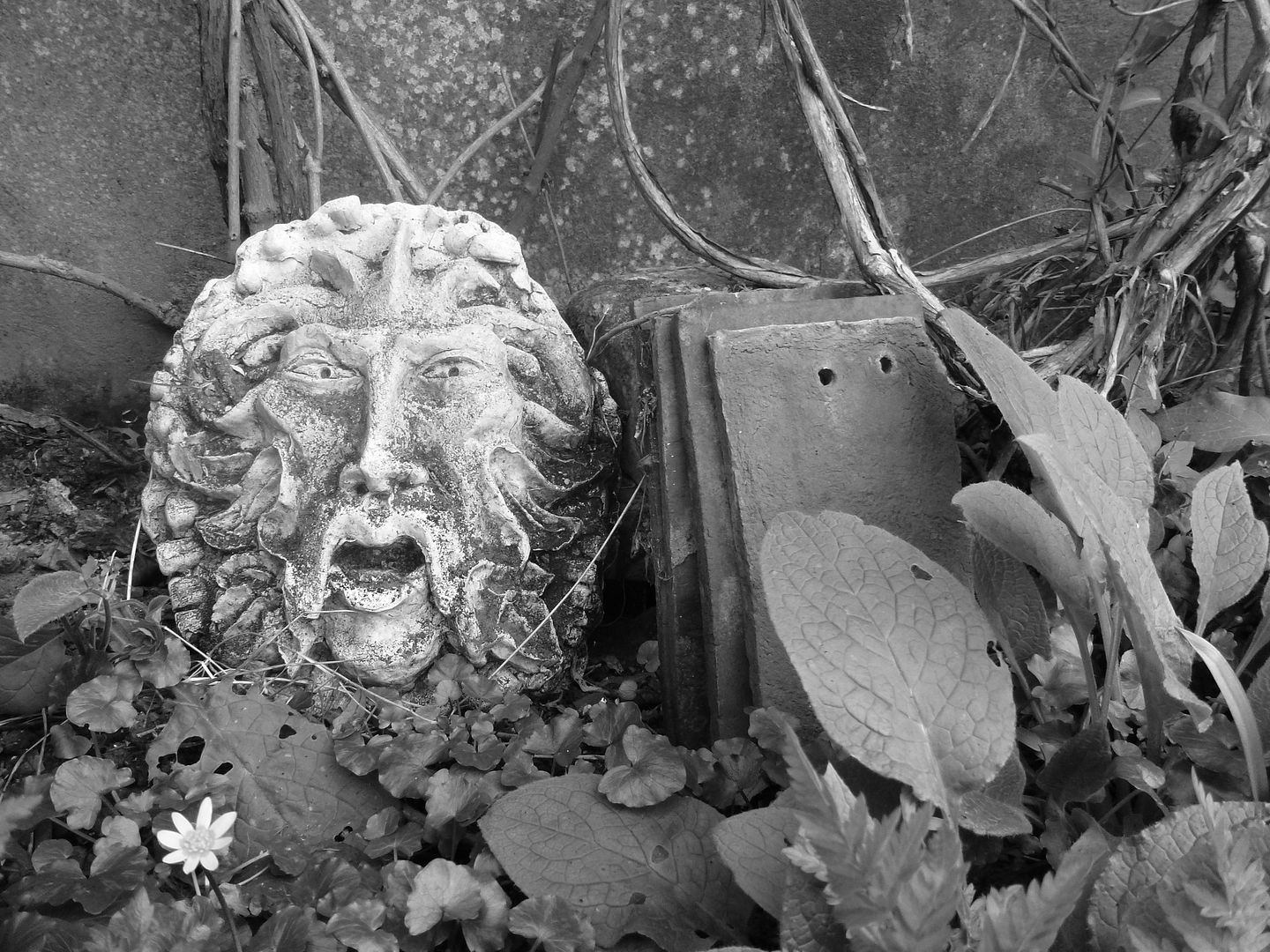
The Fire Festival of Beltane
This festival is also known as Beltane, the Celtic May Day. It officially begins at moonrise on May Day Eve, and marks the beginning of the third quarter or second half of the ancient Celtic year.
It is celebrated as an early pastoral festival accompanying the first turning of the herds out to wild pasture. The rituals were held to promote fertility. The cattle were driven between the Belfires to protect them from ills.
Contact with the fire was interpreted as symbolic contact with the sun. In early Celtic times, the druids kindled the Beltane fires with specific incantations.
Later the Christian church took over the Beltane observances, a service was held in the church, followed by a procession to the fields or hills, where the priest kindled the fire. The rowan branch is hung over the house fire on May Day to preserve the fire itself from bewitchment (the house fire being symbolic of the luck of the house).
This is a holiday of Union–both between the Goddess and the God and between man and woman. Handfastings (Pagan marriages) are traditional at this time. It is a time of fertility and harvest, the time for reaping the wealth from the seeds that we have sown.
Celebrations include braiding of one’s hair (to honour the union of man and woman and Goddess and God), circling the Maypole for fertility and jumping the Beltane fire for luck. Beltane is one of the Major Sabbats of the Wiccan religion. We celebrate sexuality (something we see as holy and intrinsic to us as holy beings), we celebrate life and the unity which fosters it.
The myths of Beltane state that the young God has blossomed into manhood, and the Goddess takes him on as her lover. Together, they learn the secrets of the sexual and the sensual, and through their union, all life begins.
Beltane is the season of maturing life and deep found love. This is the time of vows, handfastings and commitment. The Lord and his Lady, having reached maturity, come together in Perfect Love and Perfect Trust to celebrate the joy of their union.
This is a time to celebrate the coming together of the masculine and feminine creative energies. Beltane marks the emergence of the young God into manhood. Stirred by the energies at work in nature, he desired the Goddess. They fall in love, lie among the grasses and blossoms and unite.
The flowers and greenery symbolise the Goddess and the Maypole represents the God. Beltane marks the return of vitality and passion of summer. Another common focal point of the Beltane rituals is the cauldron, which represents the Goddess. The Welsh goddess Creiddylad is connected with Beltane, often called the May Queen, she was a Goddess of summer flowers and love.

May Day
May Day has long been marked with feasts and rituals. May poles, supremely phallic symbols, were the focal point of old English village rituals. Many people arose at dawn to gather flowers and green branches from the fields and gardens, using them to decorate the village Maypoles.
The May Queen (and often King) is chosen from among the young people, and they go singing from door to door throughout the town carrying flowers or the May tree, soliciting donations for merrymaking in return for the “blessing of May”.
This is symbolic of bestowing and sharing of the new creative power that is stirring in the world. As the kids go from door to door, the May Bride often sings to the effect that those who give will get of nature’s bounty through the year.
In parts of France, some jilted youth will lie in a field on May Day and pretend to sleep. If any village girl is willing to marry him, she goes and wakes him with a kiss; the pair then goes to the village inn together and lead the dance which announces their engagement. The boy is called “the betrothed of May.”
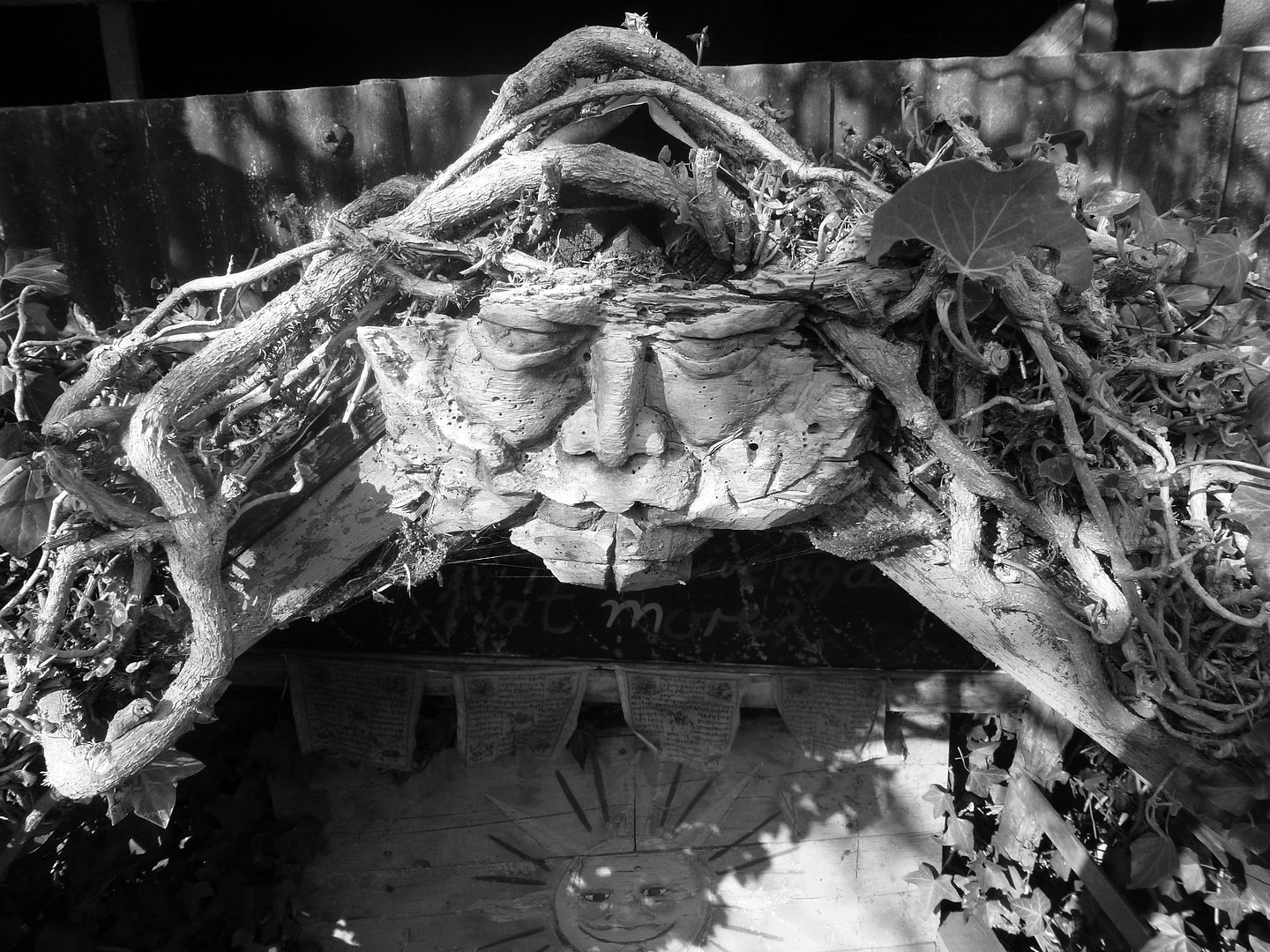
The Laila Mythology
It is written in Celtic folklore that the roots of the hawthorn tree transcend the two worlds. A factualism that was soon to be realised by a young girl named Laila.
Whilst out on a spring saunter in Epping woods, Laila is inexplicably set upon and despoiled of her treasured necklace by an insane opportunistic magpie. Subsequently she finds herself on a search for its recovery, but soon discovers more than she had bargained for, when the magpie who stole it turns out to be none other than a nefarious shaman named Ibora, who appears to have mistaken her pendant for that of a mythical jewel known as the Brisingamen.
Luring her down through the roots of a gigantic hawthorn tree into the underworld, Laila is inadvertently transported into a magical land where Ogres and Wyvern frequent and where the sanctity of nature is no longer revered by humanity.
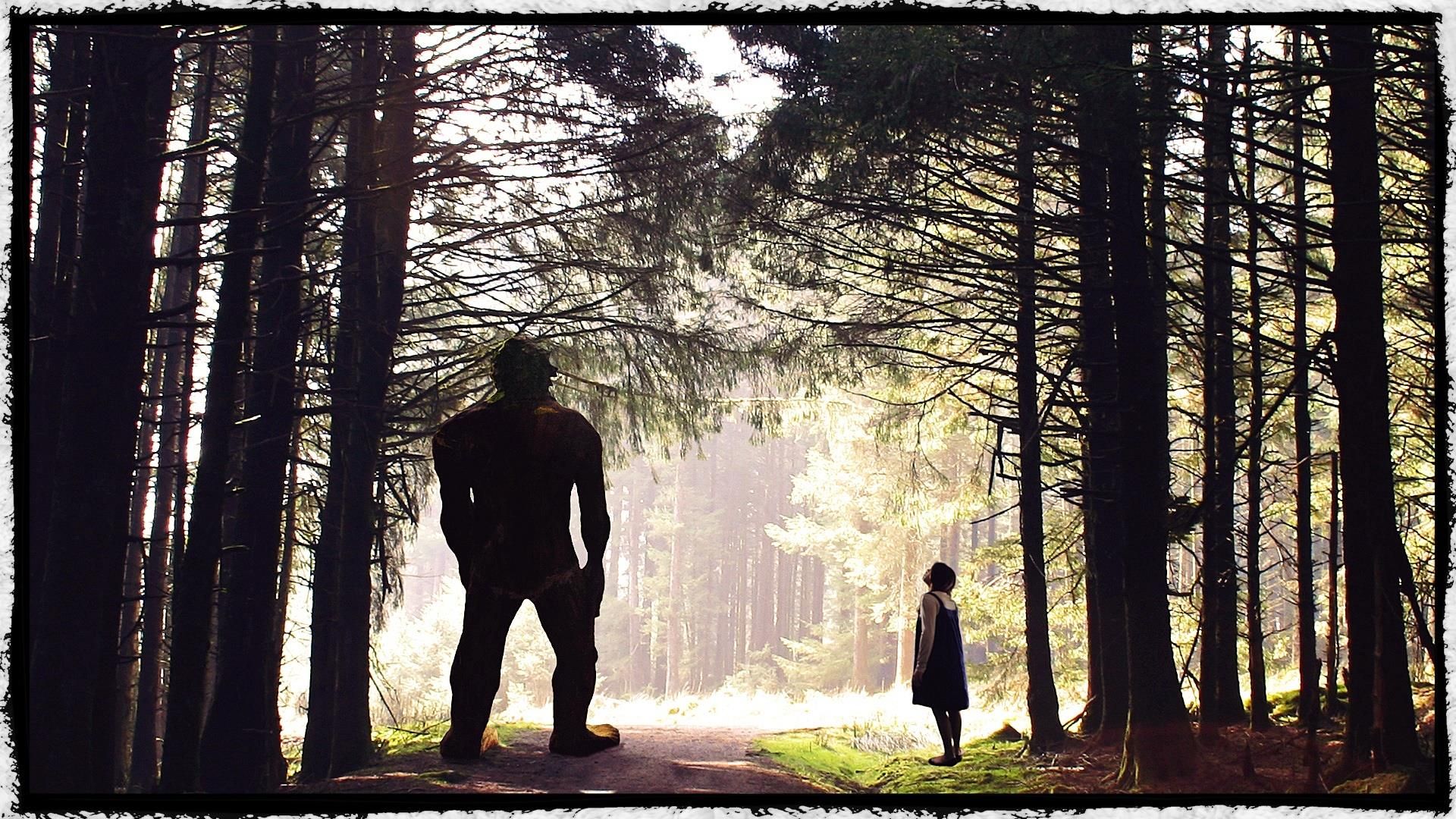
Befriended by Jack, a huge Green man who has the ability to converse with trees and with the help of a wise old wizard named Yan Overton, Laila desperately tries to get back to her world, with or without her necklace, but in order to do so she must first find the legendary Omega tree, the last of the ancient hawthorns or ‘world trees’.
But with all ancient world trees condemned by order of Queen Lhanna, a tyrannous sorceress whose lust for power impels her to kill her own sister Isla in order to gain complete total control of the world, Laila’s quest seems almost futile.
But soon she discovers the secret whereabouts of the Omega tree, far away in the Goblin lands and the reasoning behind Lhanna’s condemnation of ancient trees.
It is prophesised in the underworld that Geborga, a gigantic dragon created by the evil Queens sister to protect the forests before she perished would return once more in to the underworld through the portal of a world tree and bring peace into the world and the subsequent demise of her sister Lhanna. With such a foreboding prospect for the Queen, all portals in and out of the underworld are to be indiscriminately felled.
But with her only means of escape under threat, Laila finds herself in a race against time.
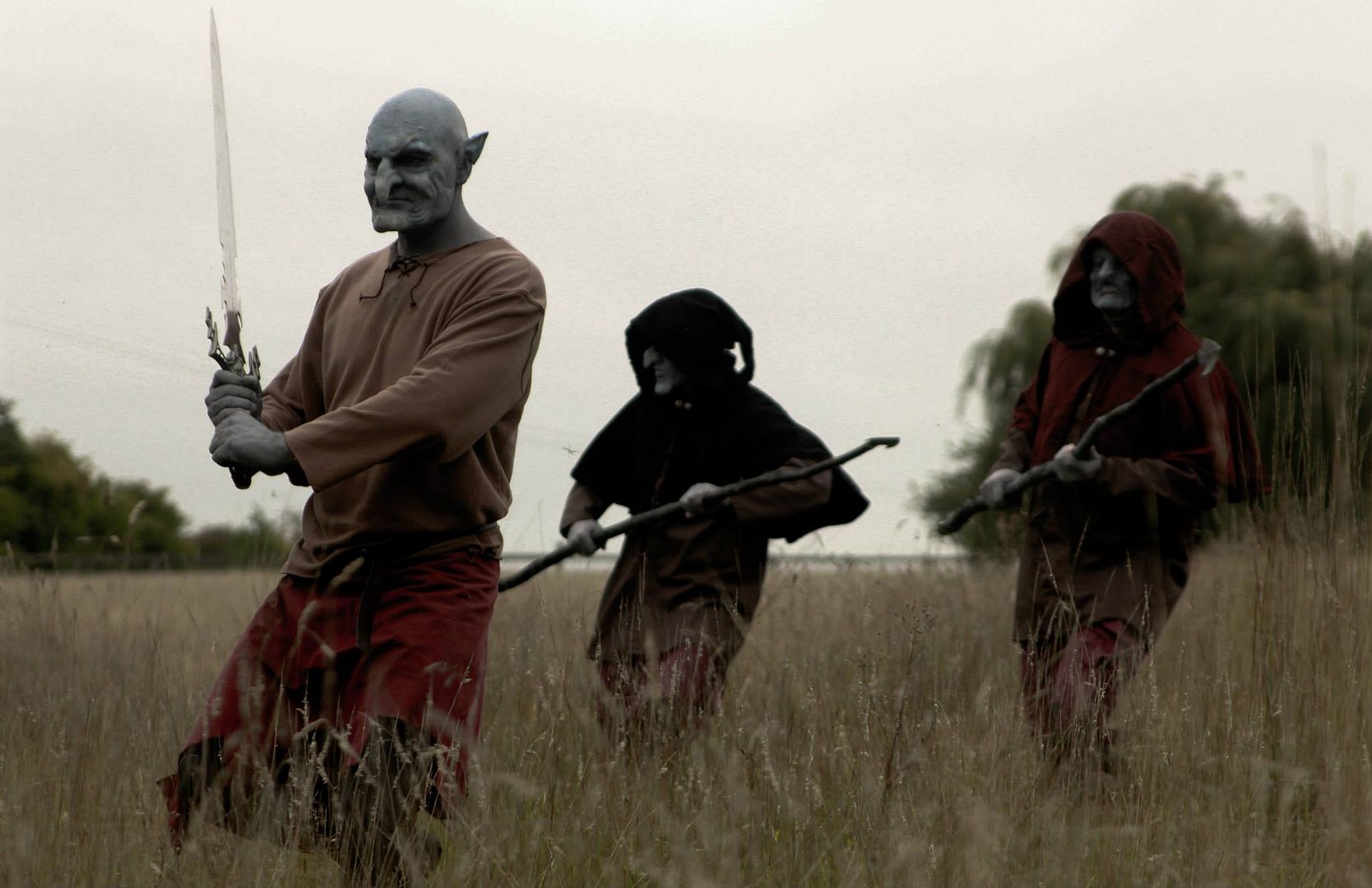
Making her way surreptitiously across the treacherous Goblin lands to the Omega tree in the company of the Green man and a Changeling named Lon Attilia, Laila can almost smell the sweet scent of home, but before reaching the town of Puo Landum in the heart of the Grayweald where the mythical tree is said to grow, she is unexpectedly betrayed by her Changeling cohort who turns out to be a servant of the Queen, and had masqueraded himself as her ally in order to discover the location of the tree.
Laila then unwittingly becomes the catalyst to a war between the despotic Queen and the race of Goblins, as Lhanna’s armies invade the Grayweald with the intent of destroying the Omega tree as well as their Goblin adversaries.
A great battle then ensues throughout the forests of the underworld as the Goblin hordes fight for their survival against an unremitting force. But with such overwhelming opposition it is only a matter of time before the last of the world trees is finally raised to the ground and the Goblins are forced to retreat into exile, leaving Laila trapped in the underworld forever.
But Jack, her trusty companion has not lost hope and believes the answer may lie in the place of their first meeting. So immediately they make their way with haste back towards the old wood but are ambushed en route by Queen Lhanna and her forces.
A brief skirmish breaks out as Jack fights desperately to protect Laila but is sadly slain by the powerful sorceress. Overwrought by the devastating loss of the green man, Laila’s sorrow appears to create a huge storm in the skies overhead and the world is cast into darkness. The earth then begins to shake as Geborga the dragon is awoken by his master’s voice and rises up from out of the mountain lake.
Realising that Laila is the reincarnation of her murdered sister Isla; Lhanna attempts to kill her but is beheaded by Ibora, her shamanic servant in an act of retribution for Isla’s fratricide.
In the aftermath of the storm, after the dust had settled, Laila finds herself inexplicably back home in Epping Forest with her pendant in her hand and Yan Overton the old wizard, walking over to greet her. He explains that her journey into the otherworld was predetermined and her purpose for going there, as well as what became of Jack, the green man.
As Laila makes her way home she wonders how on earth she can relate her amazing adventures to her family, but understands that she will never be the same person ever again.
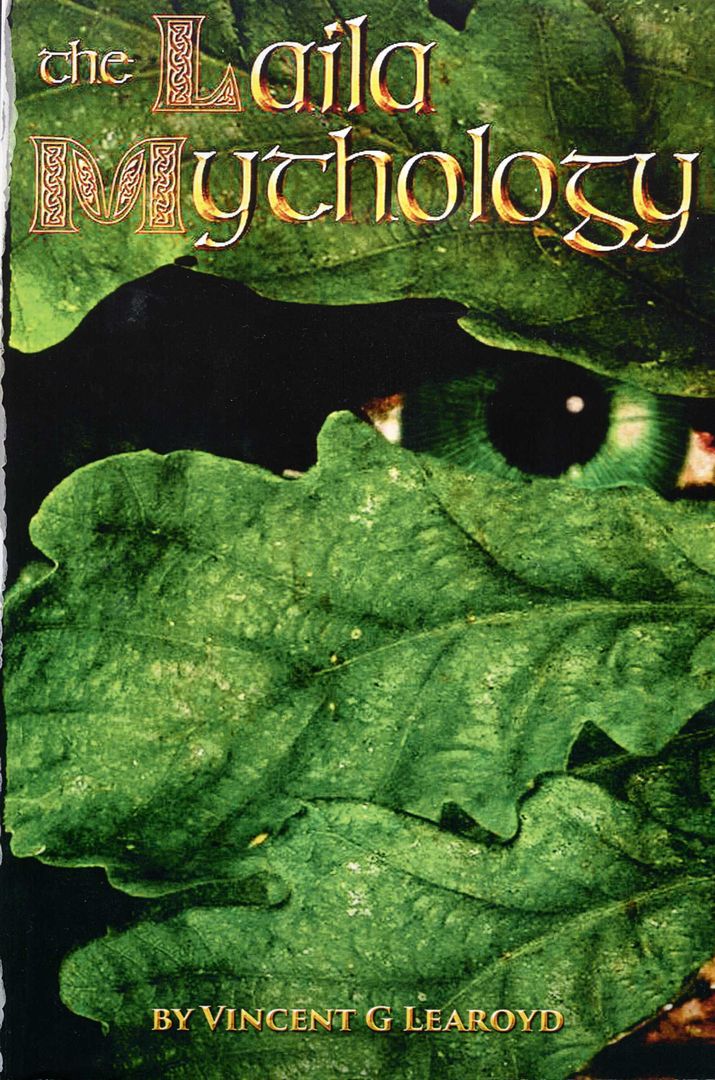
YOU MAY PURCHASE A COPY OF THE BOOK ‘LAILA MYTHOLOGY’ BY VINCENT G LEAROYD FROM HERE – WELL WORTH SUPPORTING.
